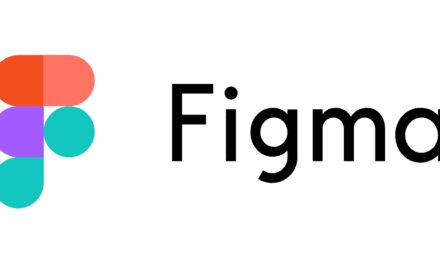A Beginner’s Guide to Open-Source Software: Benefits and How to Get Started
Open-source software has become a driving force behind the digital revolution, empowering individuals and businesses with free access to high-quality, customizable, and community-driven software solutions. If you’re new to the concept of open-source software and eager to explore its benefits and how you can get started, this beginner’s guide is tailored just for you. In this article, we will shed light on the world of open-source software, delve into its advantages, showcase successful examples, and provide a step-by-step guide on how you can contribute or embark on your journey with open-source projects.
Understanding Open-Source Software
Open-source software refers to software that is developed and made available with its source code, allowing users to view, modify, and distribute it freely. This model is based on the principles of openness, transparency, and collaboration, which have been key to its success. One of the main strengths of open-source software is its community-driven development. Unlike proprietary software, which is developed solely by a single company, open-source software is created and maintained by a diverse community of developers from around the world. This community-driven approach brings together different perspectives and expertise to ensure that the software is of high quality and continually evolving. The power of the community lies in its ability to identify and fix bugs, add new features, and improve the overall performance of the software.
Another advantage of open-source software is the customization and flexibility it offers to users. Since the source code is freely available, users have the freedom to modify the software according to their specific needs and preferences. They can add or remove features, change the user interface, or integrate it with other software to create a tailored solution. This level of customization allows organizations and individuals to adapt the software to their unique requirements, leading to increased productivity and efficiency. Furthermore, the flexibility of open-source software enables users to avoid vendor lock-in, as they are not dependent on a single company for support and updates. This promotes competition and fosters innovation in the software industry.
In conclusion, understanding open-source software involves grasping its principles of openness and collaboration. The community-driven development model ensures that the software is continuously improved and updated by a diverse group of developers. The ability to customize and tailor the software to specific needs provides users with flexibility and increased productivity. Open-source software empowers users to take control of their digital tools, promoting innovation and driving the growth of the software industry.
Advantages of Open-Source Software
Open-source software offers many advantages that make it a popular choice for individuals and businesses alike. One of the key advantages of open-source software is its cost-effectiveness and potential for financial savings. Unlike proprietary software, open-source software is usually available for free, allowing users to avoid the high costs associated with purchasing licenses. This can lead to significant savings, especially for businesses with a large number of users. Additionally, open-source software provides enhanced security and transparency. Users have access to the source code, allowing them to analyze it and identify any potential security vulnerabilities.
This transparency ensures that any flaws or weaknesses are quickly identified and fixed, resulting in a more secure software environment. Furthermore, open-source software benefits from continuous updates and improvements from a global community of developers. Regular updates are released to address bugs, add new features, and improve performance. This ensures that the software remains up-to-date and reliable.
Lastly, open-source software offers an abundance of software choices. With a wide range of open-source applications available, users have the freedom to choose the software that best meets their needs. This allows for customization and flexibility that may not be possible with proprietary software. In conclusion, open-source software provides numerous advantages that make it an attractive option for individuals and businesses.
The cost-effectiveness and potential for financial savings, enhanced security and transparency, continuous updates and improvements, and abundance of software choices all contribute to the popularity and success of open-source software. Whether it is used for personal or professional purposes, open-source software offers a reliable and customizable solution for users around the world.
Successful Examples of Open-Source Projects
Open-source projects have been incredibly successful in many domains, delivering high-quality software that rivals its proprietary counterparts. One of the most prominent success stories is the Linux operating system. Linux has emerged as a powerful alternative to proprietary systems, offering stability, security, and customization options. With a strong and dedicated community of developers, Linux has grown into a widely used operating system, powering devices ranging from smartphones to supercomputers.
Another successful example is the Apache HTTP Server, which holds the distinction of being the world’s most widely used web server. Its open-source nature has contributed to its flexibility and extensibility, making it a favorite choice for hosting websites. Apache’s robust performance and its ability to handle large volumes of traffic have made it an indispensable tool for businesses worldwide.
WordPress, a content management system, is another open-source project that has achieved tremendous success. It empowers millions of websites worldwide, offering an easy-to-use interface and a wide variety of themes and plugins. Its extensive community support ensures that users can find answers to their queries or issues quickly. WordPress has revolutionized website building and has become the go-to platform for bloggers, businesses, and professional web developers alike.
Mozilla Firefox is an open-source browser that has made privacy a priority. It has gained popularity as a reliable alternative to proprietary browsers, offering enhanced security features and customization options. Its community-driven development model ensures that the browser evolves to meet the changing needs of its users. Firefox’s commitment to user privacy and its continuous improvements have made it a preferred choice for users concerned about their online security.
The success of these open-source projects highlights the power and potential of collaborative software development. By harnessing the collective knowledge and expertise of a community, these projects have managed to deliver outstanding software solutions that can compete with their proprietary counterparts. Open-source projects like Linux, Apache HTTP Server, WordPress, and Mozilla Firefox have not only redefined their respective domains but have also set a precedent for the success and effectiveness of collaborative software development.
Getting Started with Open-Source Software
Getting started with open-source software can be an exciting and fulfilling journey for individuals with various interests and expertise. The first step in this process is to identify your interests and expertise. Whether you are passionate about web development, artificial intelligence, or data analysis, there is likely an open-source project that aligns with your interests. By choosing a project that matches your expertise, you can contribute your knowledge and skills effectively.
Once you have identified your interests and expertise, the next step is to explore open-source repositories and platforms. GitHub, for example, is a popular platform that hosts numerous open-source projects. It provides a search feature that allows you to find projects based on their technology stack, programming language, or even their community size. This exploration phase can help you find projects that excite you and that you would be motivated to contribute to.
Understanding project contribution guidelines is crucial before making your first contribution. Each open-source project has its own set of guidelines and standards that contributors are expected to follow. These guidelines help maintain consistency and ensure that contributions are meaningful and valuable to the project. It is essential to spend some time carefully reading and understanding the project’s contribution guidelines, as they will outline the specific processes for making contributions, such as creating a fork of the project, branching and submitting pull requests, and coding standards to adhere to. Once you have familiarized yourself with the guidelines, you are ready to make your first contribution.
This can be an intimidating step, especially for newcomers, but it is important to remember that every journey starts with a single step. Start by identifying a relatively simple issue or task within the project and work on fixing it or contributing to its improvement. By actively participating in the development process, you will gain valuable experience and knowledge while also making a positive impact on the open-source community. As you gain confidence and become more comfortable, you can gradually take on more challenging tasks and make larger contributions to the project.
Open-source software offers a unique opportunity to collaborate with developers worldwide and enhance your skills while making a difference in the tech community. So, get started today and make your mark in the world of open-source software.
Contributing to Open-Source Software
Contributing to open-source software is a valuable way for developers to collaborate with other members of the developer community and make a positive impact on the software they use. Joining developer communities and forums allows developers to connect with like-minded individuals who share a passion for open-source development. By collaborating with other contributors, developers can learn from one another, exchange ideas, and work together to solve problems and create innovative solutions.
One important aspect of contributing to open-source software is bug reporting. When developers encounter bugs or issues within the software, they can report them to the community, enabling others to find and fix the problem. Bug reporting helps improve the overall quality and stability of the software, as it allows the community to address and rectify these issues.
Additionally, developers can also actively participate in fixing these bugs, contributing their expertise and knowledge to resolve the problems. Another way developers can contribute to open-source software is by adding new features and improvements. They can propose and develop new functionalities that enhance the software’s capabilities or suggest improvements to existing features. By doing so, developers help to keep the software relevant and up-to-date, ensuring that it meets the evolving needs of its users.
Adding new features and improvements also offers opportunities for developers to showcase their skills and creativity, as they can contribute their unique ideas and expertise to the project. In conclusion, contributing to open-source software provides developers with various avenues to engage with the developer community, collaborate with other contributors, report and fix bugs, and add new features and improvements.
Such contributions not only benefit the software itself but also support the growth of open-source development, fostering innovation and knowledge sharing within the community. By actively participating in open-source projects, developers can make valuable contributions and help create software that is more robust, efficient, and user-friendly.
Embracing the Open-Source Community
Embracing the open-source community is a meaningful and valuable endeavor for individuals seeking to improve their skills and expand their networks. The spirit of open-source collaboration is based on the idea that by working together, people can create something greater than what could be achieved alone. This community welcomes individuals of all skill levels, providing opportunities for both novices and experts to learn and contribute.
One of the greatest advantages of participating in the open-source community is the ability to learn from experienced contributors. These individuals have often spent years honing their skills and possess a wealth of knowledge that they are willing to share. By collaborating with them, aspiring developers can gain exposure to different perspectives, learn new techniques, and refine their own abilities. Additionally, engaging with the open-source community allows individuals to build their portfolios and enhance their reputation within the industry. Through contributing to open-source projects, developers can showcase their abilities to potential employers, clients, and collaborators.
These projects serve as tangible evidence of their skills and dedication, allowing them to stand out from their peers. Moreover, actively participating in the community fosters connections and networking opportunities. By working alongside other passionate individuals, developers can form valuable relationships and expand their professional networks. These connections can lead to future job prospects, mentorships, and collaborations on exciting projects.
Moreover, actively participating in the open-source community benefits not only the individual developer, but also the community as a whole. By sharing knowledge, providing feedback, and collaborating, the community can collectively produce high-quality software that can be freely used and improved by others. In conclusion, embracing the open-source community offers numerous advantages for developers. It provides a platform for collaboration, learning from experienced contributors, building a portfolio, and enhancing one’s reputation within the industry.
Moreover, it fosters connections and networking opportunities that can lead to valuable career advancements.
Conclusion
Open-source software stands as a symbol of collective innovation and collaboration, providing individuals and businesses with an array of advantages that traditional proprietary software often lacks. As you dive into the world of open-source, remember that it’s not just about using free software; it’s about being part of a community that fosters creativity, inclusivity, and continuous improvement. Embrace the freedom and power of open-source software, and you’ll find yourself on a journey of learning, growth, and making a positive impact on the digital landscape.




